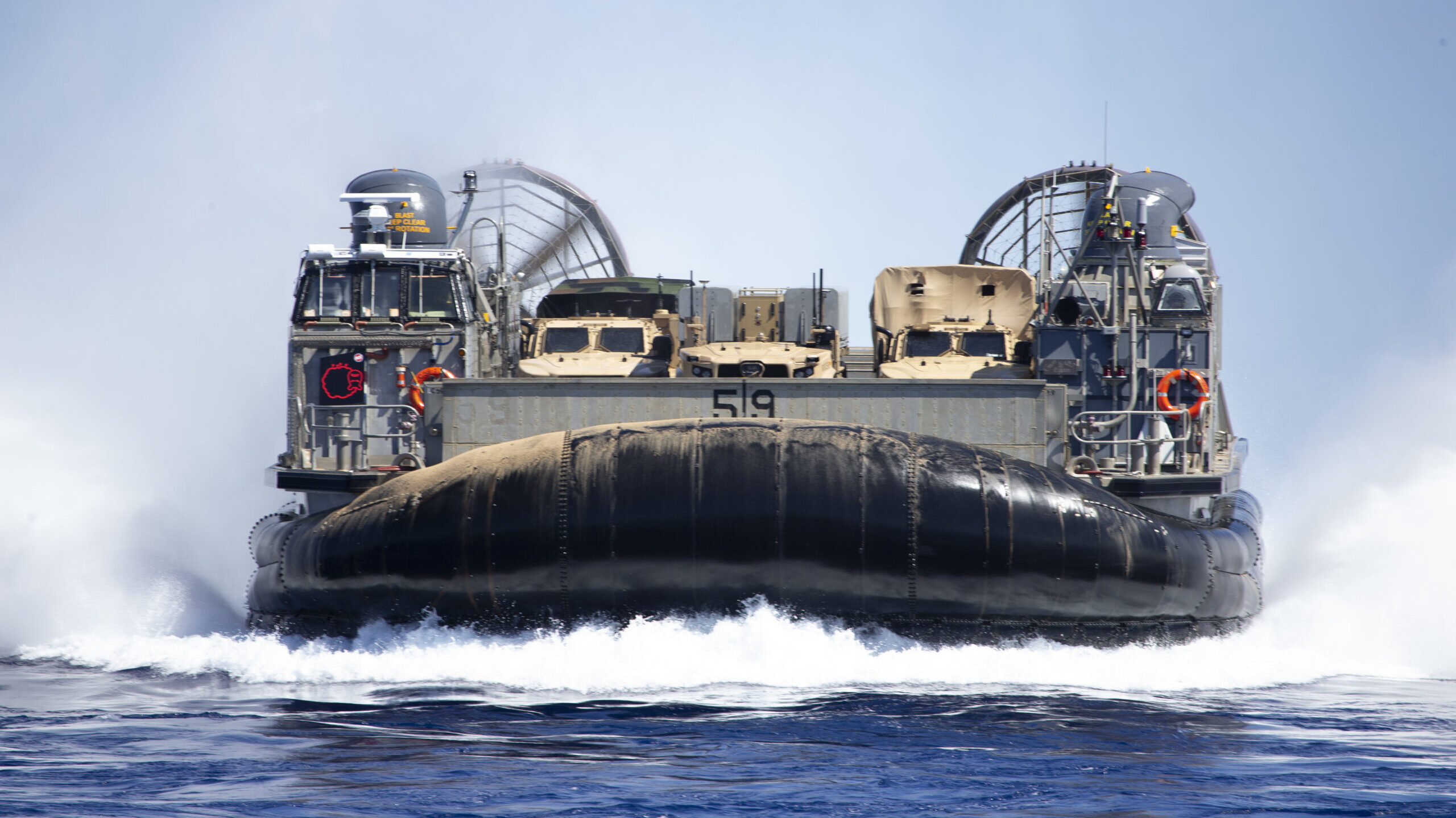
The Marine Corps’ ability to move quickly between deep blue water and the littoral environment a key focus area for the service’s Force Design 2030, according to Lt. Gen. Karsten Heckl.(U.S. Marine Corps photo by Cpl. Luke Cohen, released)
WASHINGTON: Among the key changes for Force Design 2030, the Marine Corps plans to expand its sensing capabilities, increase its numbers of information warfare operators and focus on increasing unit mobility, especially while conducting logistics operations in a contested environment.
They’re changes that need to happen fast, according to Lt. Gen. Karsten Heckl, because time isn’t on the Marines’ side.
“A big component to everything [we’re] talking about is time,” Heckl, the service’s deputy commandant for combat development and integration, told reporters last week ahead of the Modern Day Marine exposition taking place in Washington, DC. That is “the one thing we can’t control, and we know that the Chinese are moving out really quickly. So, doing this at speed is really important.”
Heckl’s billet as the three-star general in charge of weapons, vehicles and technology requirements makes him one of the key officers leading the changes under Force Design 2030, the service’s long-term, forward-looking strategy. While 2030 is one of the long distance “waypoints,” as Commandant Gen. David Berger puts it, there is a sense of urgency in the Marine Corps that it can’t wait that long before making much more fundamental shifts.
That urgency has been reflected in milestones this past year, including the establishment of the first Marine Littoral Regiment, a smaller, more agile unit focused on embodying the Marines’ crisis response mentality. Also of note were several successful tests of the ship-killing weapon dubbed NMESIS. During the phone call, Heckl revealed the service just last week conducted three more shots of that weapon.
Looking forward, Heckl said sensors, for instance, are “going to be critical” to Force Design, said Heckl, citing various platforms such the MQ-9 Reaper, the Ground/Air Task-Oriented Radar and the future unmanned air vehicle program dubbed MUX.
The day before Heckl spoke to reporters, Berger also talked about Force Design 2030 and specifically called out the “ubiquitous” numbers of sensors being deployed “up into space and below space.”
“It doesn’t win the war,” but, in Berger’s mind, you’ll likely lose the war without it.
RELATED: Marine commandant talks Ukraine, Force Design 2030 controversy
Another area Heckl is focused on is information warfare, citing both its importance and the difficulty in recruiting experienced operators.
“The people are so difficult to get trained up and then fielded, they’re very low density, very high demand,” he said, referring to the Marine Expeditionary Force information groups. “How we operate in the information environment is going to be critical.”
There’s a growing sense in both the Navy and the Marine Corps that a greater focus needs to be paid to information warfare, as Breaking Defense previously reported. Vice Adm. Kelly Aeschbach, the type commander for information warfare, has been actively discussing ways to increase the number of IW officer billets onboard various ships in the fleet.
Berger the previous day had stressed how the Ukrainian military was proving how easily larger formations can be targeted due to how slowly they move. Following up on the commandant’s comments, Heckl also stressed the need for units to be smaller and more mobile as part of Force Design 2030’s push for logistics in a contested environment.
“That’s going to be a tough one to crack,” said Heckl. “It starts kind of in the theme of signature management … And what that also means is requiring less to be sustained.”
In that vein, the three-star general also stressed the need for the service to continue to improve its mobility in the littorals, a key aspect to the operating concept the service published in 2017, dubbed Littoral Operations in a Contested Environment.
One of the key platforms the service has started to develop under Force Design 2030, the Light Amphibious Warship (LAW), is meant to do just that, envisioned to quickly bring teams of Marines in from the deep water to the shallower littoral environment.
“Particularly for the Indo Pacific, how do we do that? What kind of surface mobility is required?” Heckl added.






















